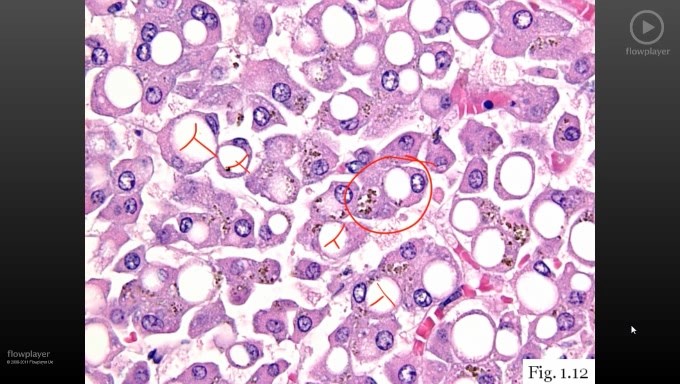GROWTH ADAPTATIONS
I. BASIC PRINCIPLES
A. An organ is in homeostasis with the physiologic stress placed oil it.
B. An increase, decrease, or change in stress on an organ can result in growth
adaptations.
II, HYPERPLASIA AND HYPERTROPHY
A. An increase in stress leads to an increase in organ size.
1. Occurs via an increase in the size (hypertrophy) and/or the number
(hyperplasia) ot cells
B. Hypertrophy involves gene activation, protein synthesis, and production of
organelles.
C. Hyperplasia involves the production of new cells from stem cells.
D. Hyperplasia and hypertrophy generally occur together (e.g., uterus during
pregnancy).
1. Permanent tissues (e.g., cardiac muscle, skeletal muscle, and nerve), however,
cannot make new cells and undergo hypertrophy only.
2. For example, cardiac myocytes undergo hypertrophy, not hyperplasia, in
response to systemic hypertension (Kg, 1,1).
E. Pathologic hyperplasia (e.g., endometrial hyperplasia) can progress to dysplasia and,
eventually, cancer.
1, A notable exception is benign prostatic hyperplasia (BPH), which does not
increase the risk for prostate cancer,
III. ATROPHY
A. A decrease in stress (e.g., decreased hormonal stimulation, disuse, or decreased
nutrients/blood supply) leads to a decrease in organ size (atrophy).
1. Occurs via a decrease in the size and number of cells
B. Decrease in cell number occurs via apoptosis.
C. Decrease in cell size occurs via ubkjuitin-proteosome degradation of the
cyloskeleton and autophagy of cellular components.
1. In ubiquitin-proleosome degradation, intermediate filaments of the cytoskeleton
are “tagged” with ubiquitin and destroyed by proteosomes.
2. Autophagy of cellular components involves generation of autophagic vacuoles.
These vacuoles fuse with lysosomes whose hydrolytic enzymes breakdown
cellular components.

